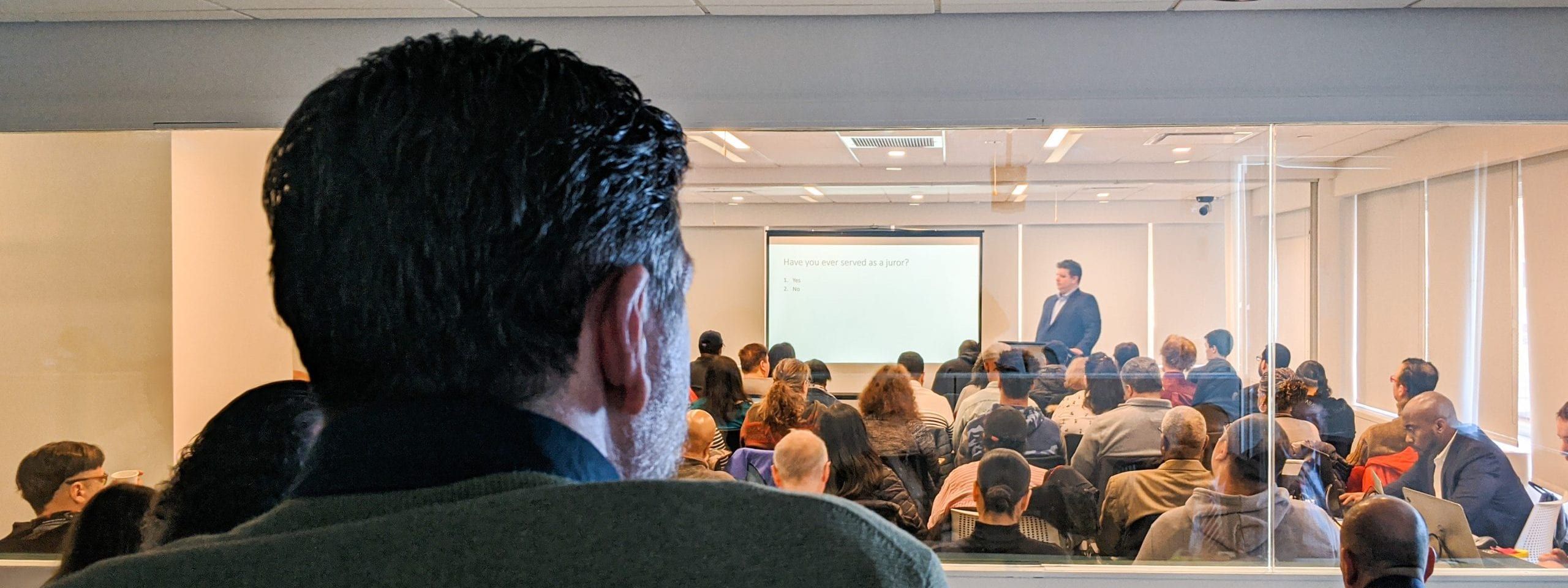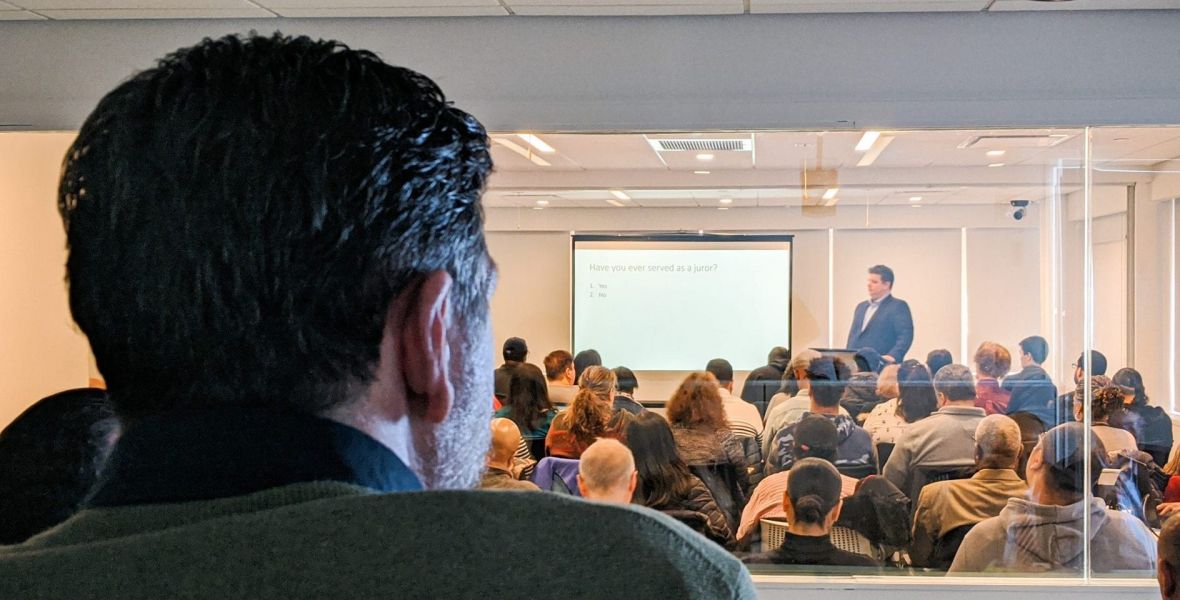

The White-Collar Defense Juror and the “Trump Effect”: An Empirical Analysis
For the last six years, litigators have pondered the question: Have jurors changed in the wake of the Trump era? Our nation underwent cataclysmic shifts in values and ideologies after Trump’s election in 2016 and became polarized on key social and political issues in unprecedented ways. As issues of racial, gender, and economic inequality rose to the forefront of our national consciousness, many wondered how these would affect the judgments that diverse groups of jurors make about white-collar defendants who are typically (though not always) White, male and wealthy. Do the assumptions about favorable defense jurors often held by white-collar defense lawyers continue to apply? Or, were Trump-era jurors simply different from their predecessors? How does political orientation fit into the picture?
In 2018 we reviewed data from pre-trial research activities conducted from 2013 through 2017, to identify demographic and other predictors of verdict voting[1]. Clear patterns emerged to indicate that demographics helped to predict verdict voting. Men were less likely to convict than women, and White men were the least conviction-prone of all. College graduates were less likely to convict than non-graduates. Other characteristics associated with higher acquittal rates included investment experience and following news about corporate executives and financial investigations. These results were not surprising: Those who look most like the typical defendant are likely to be the most sympathetic jurors.
Looking For A Trump Effect
We recently began looking at these data differently In an effort to identify whether there really was any kind of “Trump effect.” The initial data set spanned both the pre-Trump (2013-2016) and the beginning of the Trump (2017) eras. We expanded it to include research participants from 2018 through the beginning of 2020, immediately before pandemic-related shutdowns began. Our final data set included 1426 participants in focus groups and mock trials, representing 33 white-collar criminal cases (primarily involving fraud allegations) across 13 venues. Our analyses focused on identifying predictors of pro-defense verdict voting – finding the acquitters – and then determining if these predictors remained the same across the 8-year span of the research or changed from the pre-Trump era to the Trump era.
Looking At Jurors Through A Political Lens
Initial analyses considering the research participants as two separate chronological cohorts were marked by a lack of clarity: The clear, sensible picture of the defense juror revealed in our earlier article was now murkier, at best. Gender and age emerged as predictors of verdict only in the Trump era, while education appeared to make a difference only in the pre-Trump era. The role of ethnicity changed from one era to the other but did so in confusing ways.
The patterns of these changing juror profiles only became clear when we began looking at them through a political lens and considered jurors’ political orientation in our analyses. In fact, for pre-Trump era jurors, political orientation – whether jurors considered themselves conservative (38%) or liberal (62%) – was the single most reliable predictor of verdict voting. While our Trump-era sample overall had a 45% acquittal rate, we found that 55% of conservatives were acquitters versus 39% of liberals, a highly significant difference.
After 2016, Conservatives And Liberals Moved In Opposite Directions – But Only Among Some Subgroups
What happened next was even more interesting. The overall acquittal rates from the pre-Trump era to the Trump-era did not change, but conservative and liberal jurors began moving in opposite directions. Conservatives dropped from an acquittal rate of 56% in the pre-Trump era to 44% in the Trump era. In contrast, the acquittal rate for liberals increased from 39% pre-Trump to 46% in the later years.
Further analyses sharpened the picture, revealing that this shift did not happen across the board among either conservatives or liberals. Rather, some demographic subgroups within each of these cohorts evidenced a shift while others did not.
- Conservative men and women both displayed dramatic drops in acquittal rates from the early period, where 56% of both men and women acquitted, to the later one where only 43% of men and 44% of women did so. Liberal men showed the opposite shift with acquittal rates rising from 40% to 51%. The liberal women’s rate, however, remained steady at 41% across both time frames.
- Among those under 45, conservatives became less likely to acquit over time (dropping from 58% to 44%) while liberals became more likely to do so (rising from 41% to 51%). Among those 45 and older, however, only the conservatives had a parallel shift; their acquittal rates dropped from 54% to 43%. Liberals, in contrast, held constant with acquittal rates of 40-41% for both eras.
- Looking across the two eras, we saw White and non-White conservatives become less likely to acquit over time. Among liberals, though, Whites stayed the same but acquittal rates for non-Whites rose from 40 to 48%.
- Finally, the single most dramatic change in verdict voting from the pre-Trump era to the Trump era was seen in conservatives who were not college graduates. This group’s acquittal rate of 61% in the earlier time frame dropped to 44% in the later period, a highly significant change. In contrast, the acquittal rates for conservative graduates and for liberals with or without college degrees did not change significantly over time.
Suddenly, our defense juror for white-collar crime cases started looking very different. Liberals, and particularly those who are young, male, and/or non-White, emerged as more favorable jurors and older conservatives seem to pose more of a threat to the white-collar defendant.
The Take-Away: What Does This Mean?
The shifts in conservative and liberal voting patterns over time are intriguing, as is the fact that these are concentrated in some demographic cohorts and not at all apparent in others.
We may speculate that the change relates, in part, to changes over time in what it means to define oneself as conservative or liberal. In an era of polarization, perhaps self-identification as a conservative in the Trump era had less to do with being pro-business – a type of conservatism that is less appreciative of government monitoring corporations and their executives – and more to do with law-and-order and punitiveness toward those who go outside the lines.
It is also illuminating to consider what subgroups did and did not shift their jury voting patterns from the pre-Trump era to the Trump era. Among conservatives, we saw acquittal rates drop among both men and women, younger and older jurors, and Whites and non-Whites.
When we looked at education, though, we saw acquittal rates dropped dramatically from one era to the next only among conservatives without college degrees. These jurors may have been the ones who identified as Trump Republicans, those who tapped into the groundswell of anger against others who have it easier or better than they ever expect to themselves. The anti-intellectual sentiment inspired by Trump may have aroused a particularly strong level of punitiveness in these less educated jurors, who would then turn on defendants who are largely both educated and wealthy.
So with this dramatically shifting landscape, what might the future hold for white-collar defendants and the jurors who determine their fates? This may depend on how tight a hold Trump retains on the ethos of the Republican party and its conservative adherents. If the nation remains highly polarized, we may see little change in the patterns described here. On the other hand, if the Biden administration is able to restore Americans’ (or at least liberal Americans’) faith in government, liberals may begin to shift to a pro-prosecution stance in busines-related cases, trusting that the government is serving the nation’s interests in its prosecutions of corporations and their executives. Furthermore, if the Biden administration can level the economic playing field or at least reduce the perception that the wealth gap is so great, we may see an increase in acquittal rates among conservatives without a college degree.
Perhaps the clearest, or even the only clear, message in these longitudinal findings is that political climate matters, in ways that are more nuanced and more complex than we might have expected. Donald Trump ushered in an era in which jurors began to think differently about white-collar cases based on their demographics and their political orientation. Changes in the White House and Congress in both 2022 and 2024 are likely to alter the political climate and with it, the profiles of most and least favorable jurors for white-collar cases. Continuing attention to racial and economic inequality will further complicate the picture.
Going forward, it will be vital to include attention to demographic factors including political orientation and even political affiliation in pre-trial research, to identify how these important characteristics will affect perceptions of individual cases and ultimately, the verdict votes of the twelve people seated in the jury box. We are not the same nation that we were in 2016, and the changes will play out everywhere, including in the courtroom.
December 2022 edition of the “New York Law Journal”© 202X ALM Global Properties, LLC. All rights reserved. Further duplication without permission is prohibited, contact 877-256-2472 or reprints@alm.com.
[1]Brickman, E. (2018). Jury selection in white-collar cases: Challenges and strategies. New York Law Journal, March 7.
Subscribe to Receive
our Latest News
Recent Content
The trial consultants trusted by the nation’s leading trial lawyers.
Locations
New York
Los Angeles